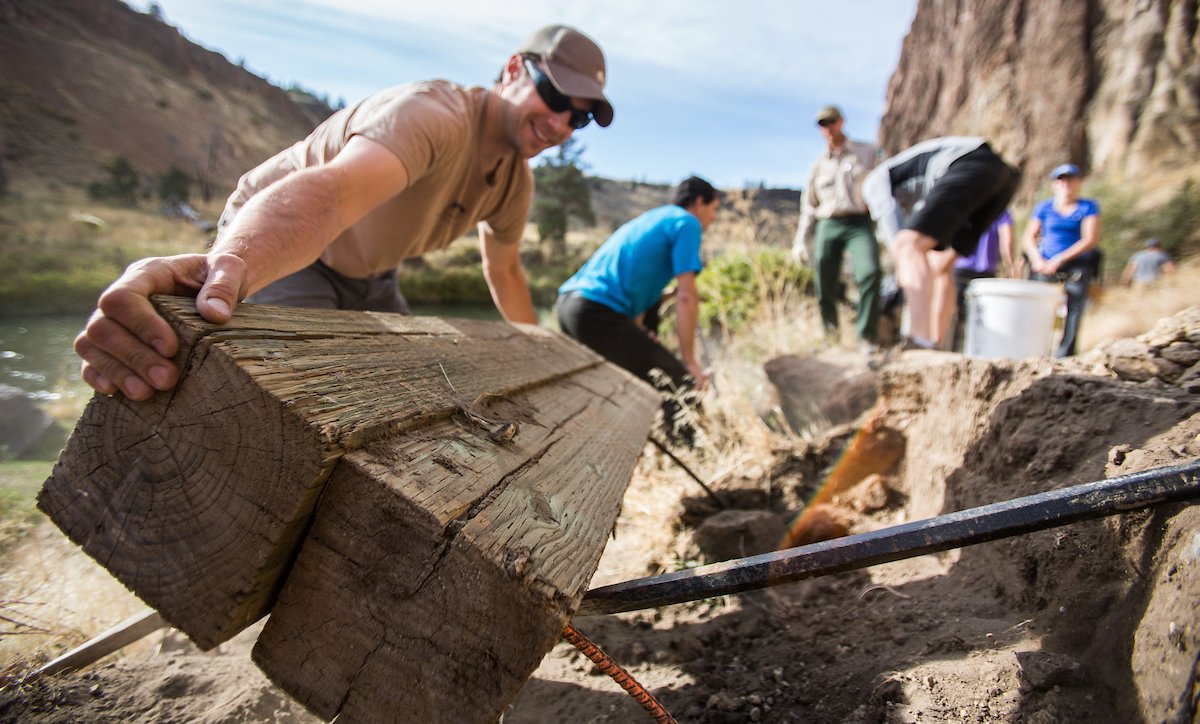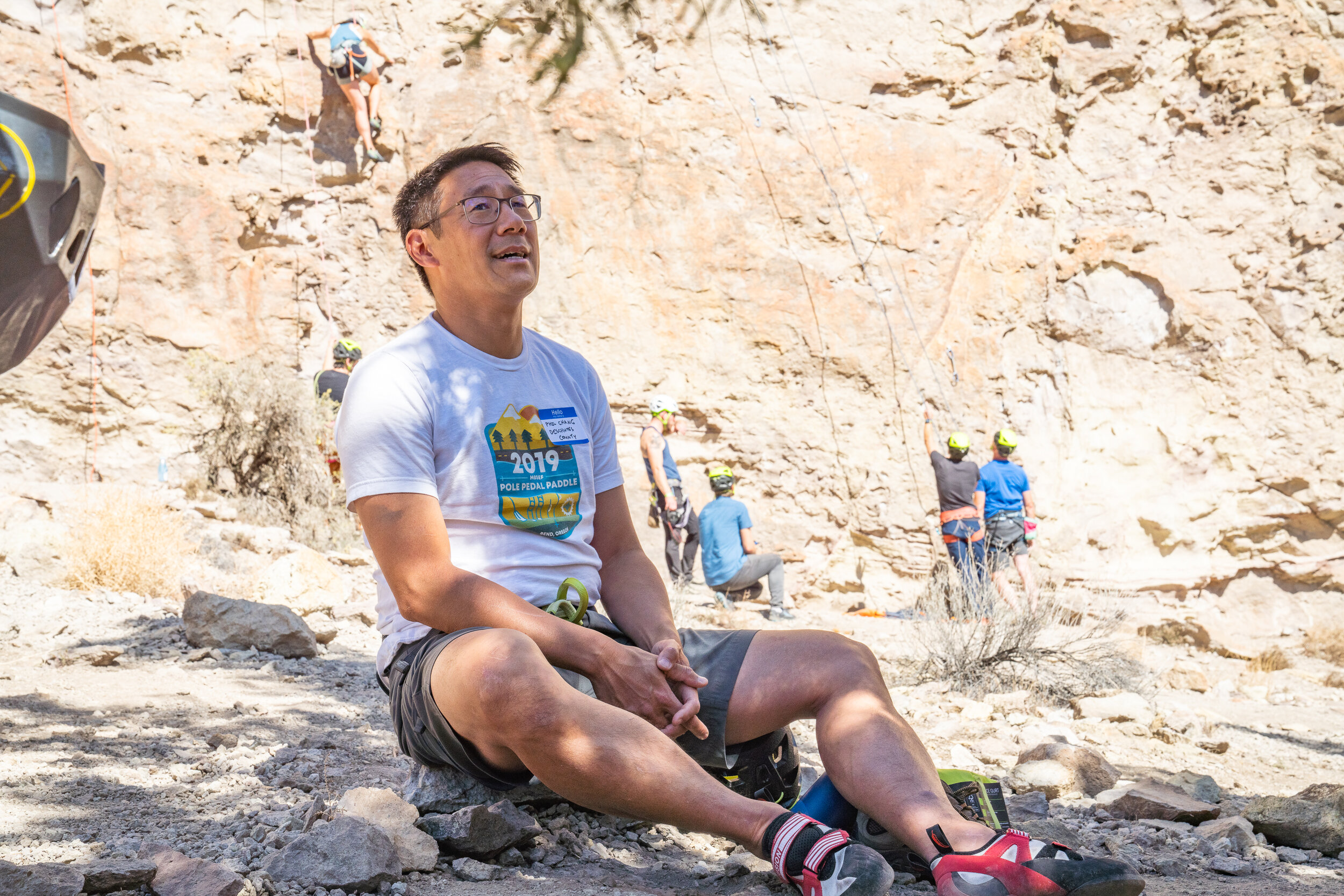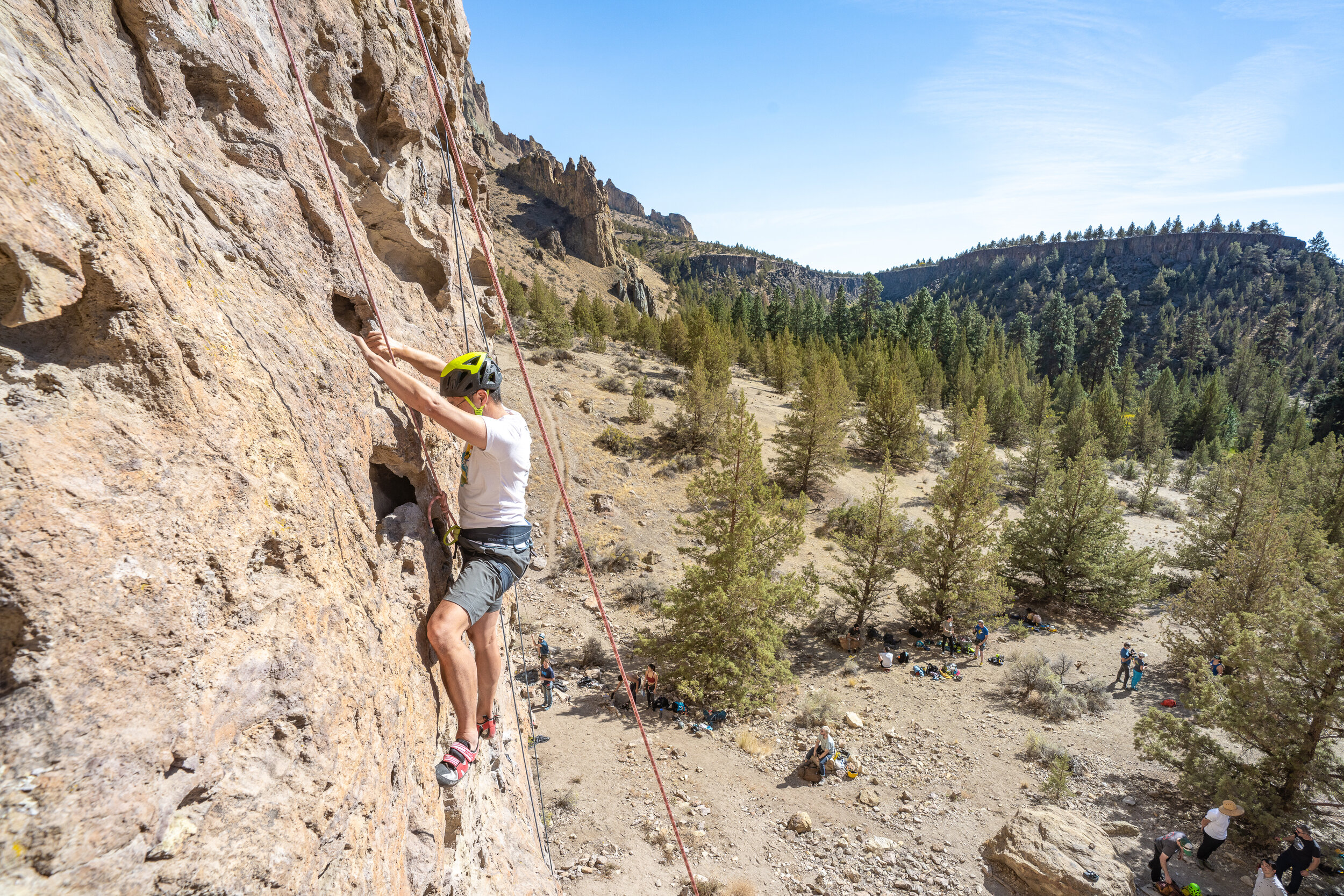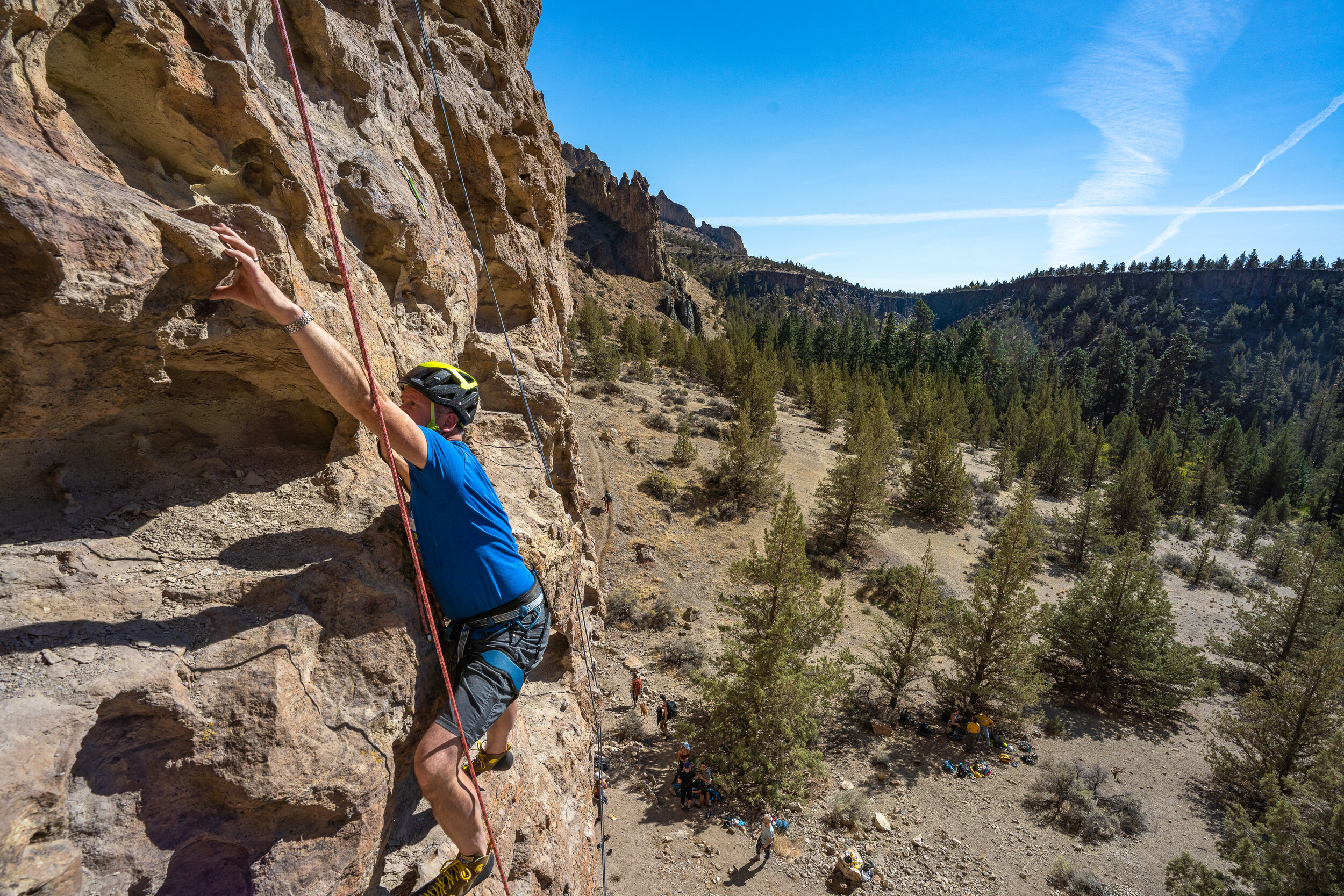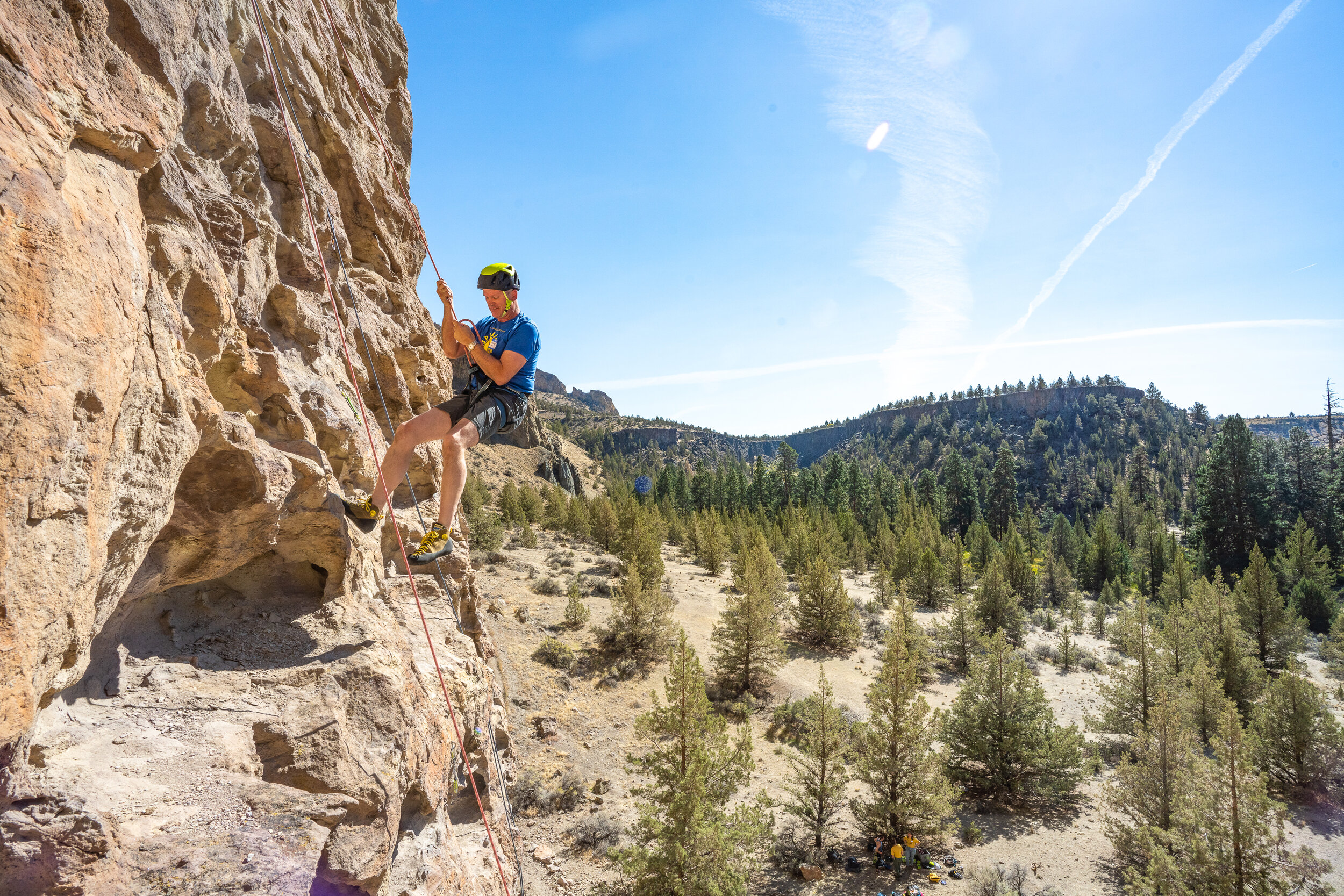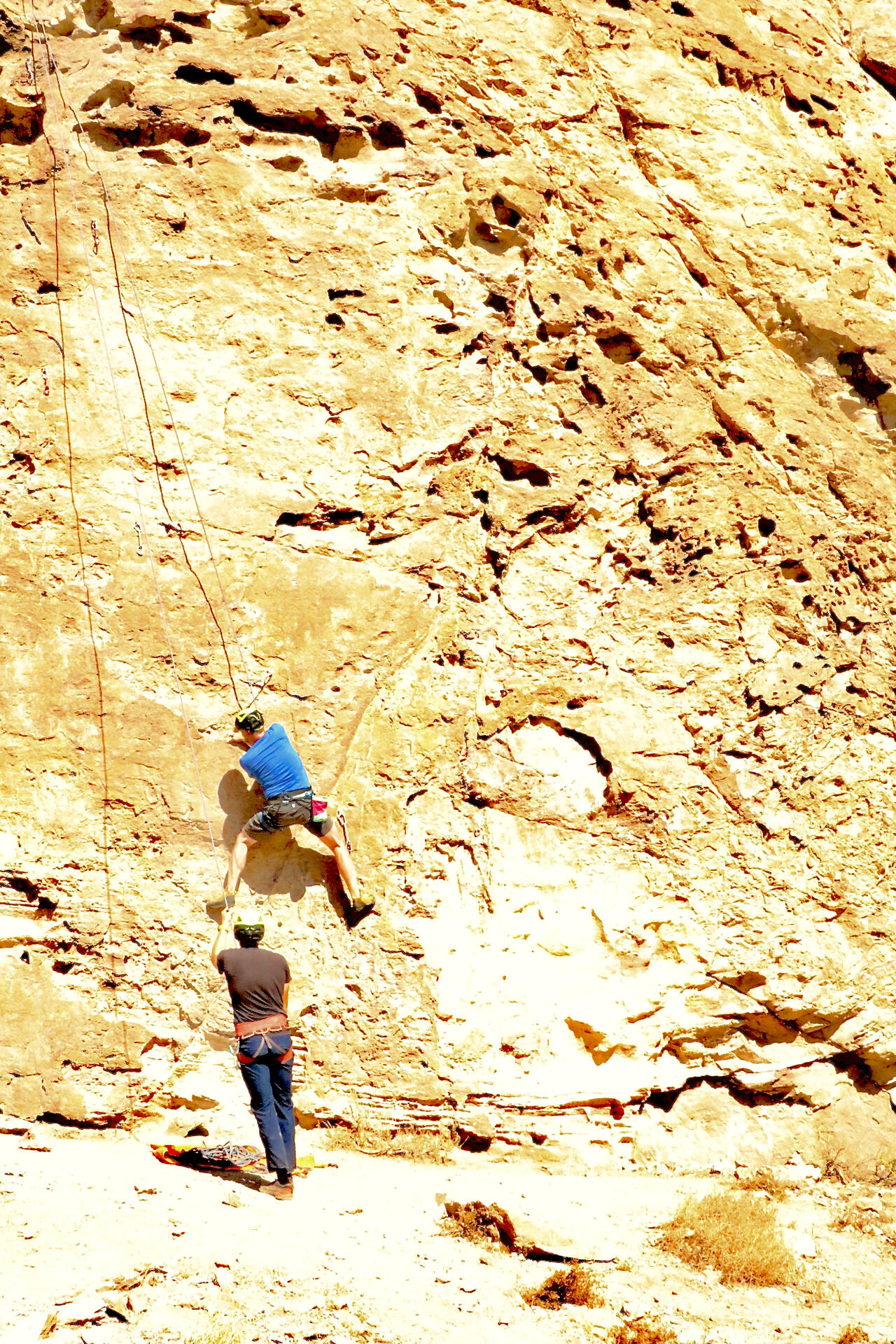Climbers gazing up at Middle Cathedral from the floor of Yosemite Valley. Yosemite was recently the scene of a new permitting process for big wall climbers. Lands of the Central Sierra Miwok peoples. AAC Member Bryan Meyer
5 minute read
The New Era of Climbing Management Plans & Regulations
Taylor Luneau, AAC Policy Manager
Across the country, people are flocking to recreate on our nations’ public lands in record setting numbers. Calico Basin, found within the world famous Red Rock Canyon National Conservation Area, experienced a 340% increase in visitation over the past decade. Across the West, peak season campsite occupancy rates have risen by an estimated 47% since 2014. The phenomena, which Colorado State University’s Public Land History Center is aptly calling “the Public Landemic” has been widely reported on and our climbing areas are feeling the pressure like everywhere else.
While the pandemic pushed people out of climbing gyms and up to our local crags, the climbing communities’ massive growth can also be attributed to, among other things, the explosion of climbing gyms across the country, the emergence of climbers at the Oscars, and the long awaited appearance of climbing in the Olympics—outcomes that naturally, we would all celebrate. But with growth comes growing pains. The flood of climbers into the outdoors is creating a tipping point for land managers who, due to lack of sustained funding and staff capacity, struggle to mitigate the increased stress on infrastructure caused by overcrowding. In response, the climbing community is experiencing a notable uptick in new regulations such as permit programs, timed entry and fee systems as well as other restrictions to our favorite climbing destinations.
Climbers at a busy crag at Calico Basin in Red Rocks Canyon National Conservation Area. These popular sport climbing areas outside Las Vegas, NV have seen some of the highest increase in use over the past 10 years. Lands of the Southern Paiute, & Newe peoples. AAC member Jon Glassberg
While I do not openly welcome any limitations on our communities’ access to climbing, I do understand that there are certain limits of unacceptable impacts to ecological and cultural resources as well as the recreational experience itself, that land managers are tasked with monitoring and mitigating. In the best case scenario, agency officials will make management recommendations that are supported by authentic community engagement, grounded in science, and adaptable to new information and recreation trends. Where in some areas a timed entry program may be a useful management tool, in others, that tool may be totally misapplied. This gets to the heart of why the AAC continues to fight for the public process and transparency embodied in the National Environmental Policy Act—the Magna Carta of environmental law and the legal basis that allows the public to comment on the management of our public lands. The land management programs that are being proposed to address overcrowding on our public lands must be tailored to the needs and specifics of the given landscape and its affiliated communities; this public comment process allows this to manifest.
Over the past year I’ve witnessed our community lean into this reality in a big way. Climbers stepped up to engage in difficult discussions on how to establish route development ethics in Ten Sleep (a plan that was recently abandoned due to US Forest Service staffing shortages), they provided critical insights on how our community interacts with wilderness climbing resources in Joshua Tree and Yosemite, they shared feedback on use patterns in Calico Basin, and they offered valuable knowledge on access points to Old Rag in Shenandoah National Park – just to name a few.
Advocacy doesn’t just happen on Capitol Hill. You
can always get involved with a trail maintenance or clean up day at your local climbing area. Here, climbers give back to the crags they love during the Smith Rock Craggin Classic. Lands of the Tenino peoples and Confederated Tribes of Warm Springs. AAC member Luke Humphrey
At several recent public hearings regarding management plans for climbing areas across the country (such as the Calico Basin RAMP/EA where hundreds of climbers showed up to share their thoughts) I’ve heard comments regarding these rules as stifling the spontaneous nature of climbing and limiting the freedom we’ve experienced as a user group for decades. These are valuable and important concerns that must be communicated to land management agencies. Climbers must actively engage in these regulatory discussions and call attention to when agencies can be doing better. In doing so, we can emphasize a deep understanding of our user groups’ distinct needs, movement patterns, and cultural values. When appropriate, we must hold decision makers accountable, and request they go back to the drawing board to reconsider their plans and evaluate their intentions.
We must also understand that growth in our sport is a great thing. Consider the many wild adventures and profound relationships that you’ve developed through your own climbing experiences. It’s well documented that recreation outdoors supports public health and wellbeing, not to mention endless economic benefits for local communities. As the AAC reflects on our own history, we’re challenging ourselves to be more inclusive and welcoming to a broader, bigger, and more diverse community of climbers. Welcoming a bigger community of climbers to the outdoors will undoubtedly make our advocacy for access challenging and nuanced, but our community will be more vibrant, rich, and dare I say more politically powerful because of it.
The era we live in as climbers is a unique one and represents a significant departure from the past. With management plans popping up across the country, we have an opportunity to ensure that our climbing areas are properly cared for, that access to these spaces is more equitable, that local Tribes have better opportunities to guide the management of their ancestral lands (there is still much room for improvement), and that the character of these important places continues to offer unique experiences for generations of climbers to come. The great thing is that climbers have done this before. We’ve worked hard to educate each other about respecting culturally sensitive sites, we’ve observed and successfully self enforced raptor closures, and we’ve stewarded the trails and local infrastructure at our climbing areas. We need to carry these successes forward.
Right now, a local climbing organization or AAC chapter in your area can undoubtedly use your help, your unique experience and your voice to protect our climbing areas. Many of these local advocacy groups have developed strong relationships with land managers and are currently assisting them with the management of local crags and public lands. I encourage you to seek out these groups, offer your time and professional expertise, join public meetings with land managers to share your insights, submit substantive comments on management plans, and look for action alerts from national organizations like the Access Fund and American Alpine Club. Through your efforts we may see our climbing areas change in positive ways, like newly graded roads, parking lots, bathrooms and more sustainably built trails — not to mention acknowledgement as an important user group and thought partner in the stewardship of our public lands.
The times are changing, but we don’t have to simply accept it for what it is. We can play a critical role in coming up with creative solutions alongside land managers. Your voice matters: get involved.



